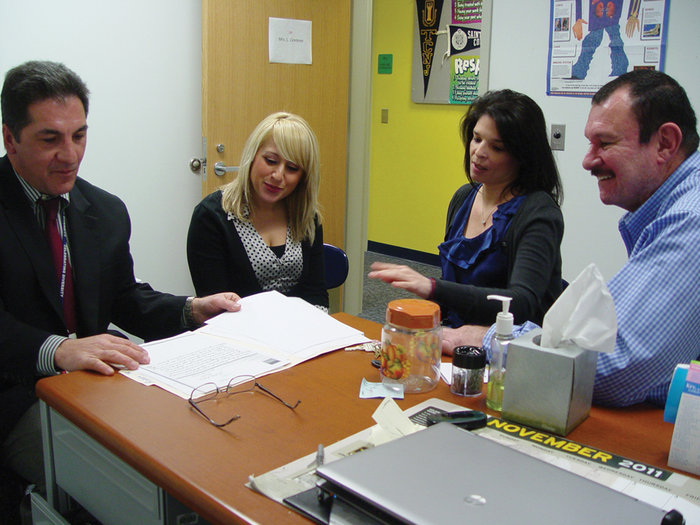Kids aren’t just abusing marijuana and prescription pills anymore, say officials who run a federally funded program to keep Union City middle schoolers and high schoolers from becoming addicted to dangerous substances. Salvia, a hallucinogenic herb related to sage and sold legally as incense in many stores, started to become popular with teens as a recreational drug around 2008. A similar (and more dangerous) form called “K2” or “Spice Gold” has emerged more recently.
Therapist Jairo Sandoval, who works specifically with the students at the city’s two middle schools, said he saw two Union City middle schoolers hospitalized in the past month for palpitations after using K2.
“Believe it or not, the high only lasts around 15 seconds,” said another therapist in the program, Iris Ortiz. “But the trip is so hard and so far, sometimes they may not come back. That’s how bad it is.”
“The trip is so hard and so far, sometimes they may not come back.” – Iris Ortiz
____________
S.A.F.E. uses adolescent-specific treatment methods to catch addiction early, and performs counseling and presentations in the schools.
“I’m usually not so dramatic, but drug use is a matter of life or death,” Paolello said last week. “The mortality rate for users between the ages of 25 and 35 is off the charts.”
With the threat of ever-evolving “designer drugs” that are readily available to children and legally sold in convenience stores and tobacco shops, the program’s staffers say it’s more important than ever.
But due to government cuts, the program could lose its federal grant as soon as October.
“The great thing about this program is that we’re getting to the kids before it becomes an exacerbated problem,” Supervising Clinician Lisa Centeno said, “and because it the program is in-house, we have the support of the school and the parents, which is key to successful treatment.”
Around 5 percent of the school population – which includes referred students from the middle and high schools – has been through the program. Centeno said the program has seen an 85 percent success rate in turning students’ drug use around.
Why S.A.F.E. works
Students are first referred to the program by a concerned teacher, parent, or police officer. They must be cleared by the school nurse, who then calls the parents to get consent.
This is where the S.A.F.E. crew comes in. They perform both a substance and a mental health screening to determine the best course of action, and the student and their family begin an educational intervention process.
The Salvia and K2 drug tests must be sent to California, the only state with a proper testing facility. It takes around two weeks for results to come back.
“Because the drugs change constantly, the reality is that no one wants to spend money to have quicker testing in place,” Ortiz said, “and we lose valuable time.”
The manufacturers are constantly changing the formula of these drugs in order to keep them legal, and the testing process “is very complicated,” Supervising Clinician Lisa Centeno said.
Once a student’s substance use is confirmed, they begin the program immediately. Combined with what Centeno called “reality therapy” and “motivational enhancement therapy,” the four-step intervention program is uniquely effective.
“With motivational therapy, the key is to figure out how to get the client to the next step,” Centeno explained. “Reality therapy is goal-driven and uses problem-solving in a way that allows the student to have a voice of their own, versus a more punitive approach.”
When people make New Year’s resolutions, they often fail because the change they wish to make is so dramatic, Paolello said. “When you want to make a change in your life, whatever it may be, you have to work through several steps,” he said, “and we support students and families through every one to ensure their success.”
S.A.F.E. received one of three “place-based grants” two years ago awarded by the federal Substance Abuse and Mental Health Administration “based on an assessment that evaluates economic need and demographics,” Ortiz said.
Officials are proud of the program’s success, and hope it can continue to receive funding next fall.
To find out more about S.A.F.E., call Lisa Centeno at (201) 205-5302.
Gennarose Pope may be reached at gpope@hudsonreporter.com
